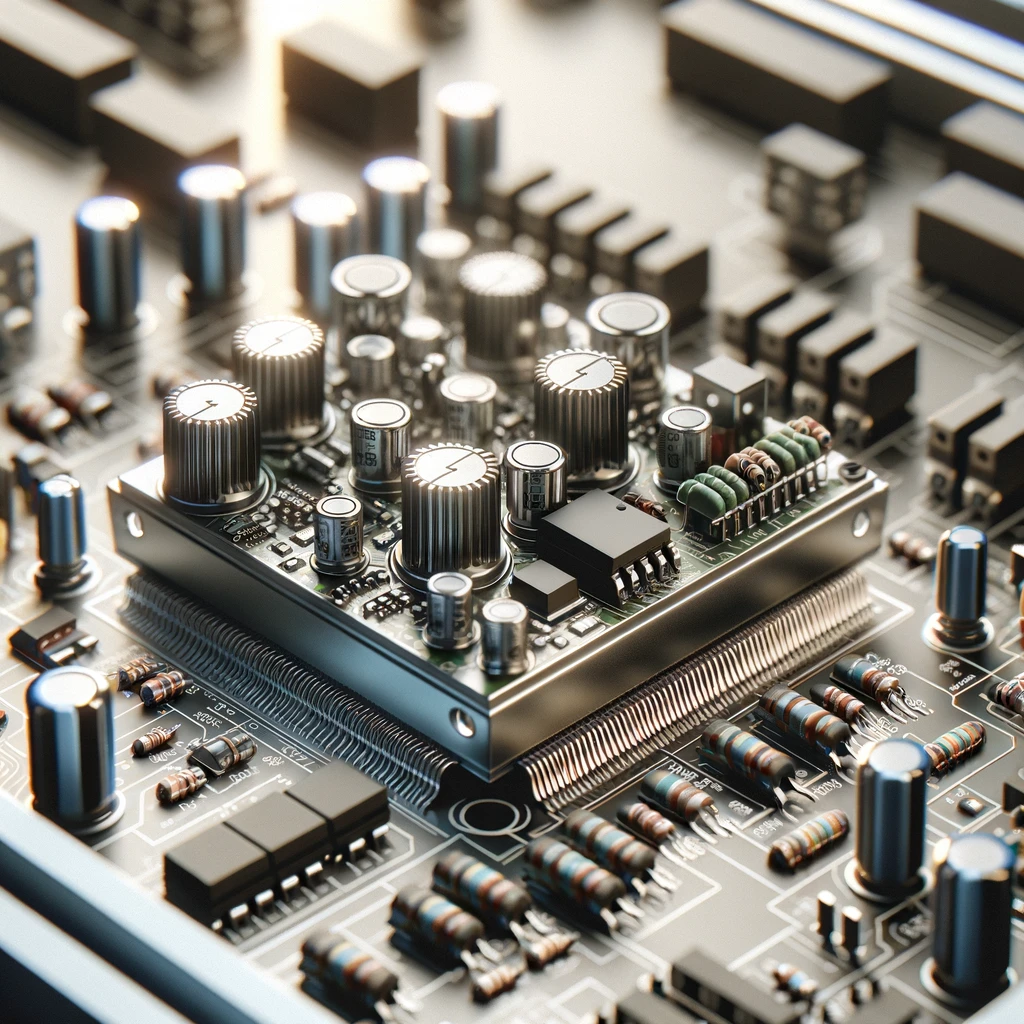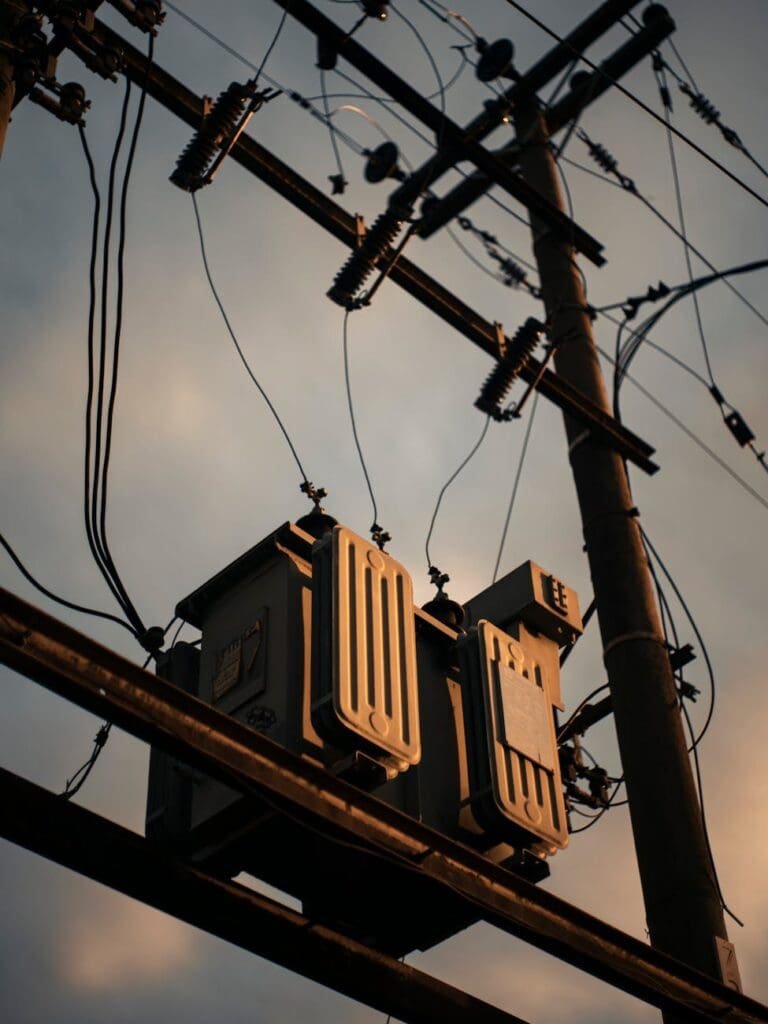Unraveling the Mysteries of Voltage Regulators
Do you ever wonder what it takes to keep your power tools working smoothly under fluctuating power conditions?
Or, how tall skyscrapers, endowed with state-of-the-art technology, maintain steady power amid the obvious electrical variances?
Here’s a nugget of information – We owe it all to an unassuming, yet astoundingly crucial device – The Voltage Regulator.
Now, let’s head into the world of voltage regulation and learn how this modest device influences construction to everyday life.

Table of Contents
The Role of a Voltage Regulator
The Essential Nature of a Voltage Regulator
Voltage regulators, though small and often inconspicuous, play a monumental role in the functioning of our everyday electronics.
From the laptop you’re reading this post on, to the construction equipment on towering skyscrapers, these little devices ensure the smooth operation of electronic components.
Function of a Voltage Regulator
In its most basic terms, a voltage regulator’s purpose is to maintain a constant voltage level. They automatically adjust the level of input voltage to output an acceptable, consistent voltage. This ability to smoothly regulate uneven power supply is why it’s a critical part of electronic and electrical systems in the construction industry.
Practical Use in Construction
In the world of construction, power tools and heavy machinery are a common sight. These tools rely on voltage regulators to perform at their peak.
Voltage Regulator for Power Tools
To illustrate, let’s consider the case of power tools. These tools – drills, saws, jackhammers and the like – draw on electrical power to turn motors and deliver the force needed to perform their tasks. A voltage regulator in this context would ensure the tool can perform smoothly and consistently, even if there are fluctuations in the power source.
Voltage Regulators for Heavy Machinery
Similarly, heavy construction machinery like cranes, diggers, or loaders also rely heavily on voltage regulators. These colossal machines not only need to deliver impressive power to shift heavy loads, but also fine control to accurately place materials or dig to precise depths. A steady and consistent voltage level, as regulated by the voltage regulator, is absolutely necessary to accomplish this.

Preventing Electrical Mishaps
Another core purpose in employing a voltage regulator is to ward off potential damage due to voltage fluctuations.
Shield Against Overvoltage
Voltage that’s too high can lead to a variety of issues, such as damage to electronic components or even safety risks like fires. By assuring a constant voltage output, the regulator makes sure these problems are avoided.
Protection Against Undervoltage
On the other hand, voltage that’s too low can cause a tool or machine to underperform. Again, the regulator steps in, ensuring the voltage doesn’t drop below a minimum threshold, thus ensuring optimal performance at all times.
Key Takeaways
So, what does the humble voltage regulator really do? Quite a lot, as it turns out:
- It maintains a consistent voltage level, ensuring smooth operation of tools and equipment.
- It protects electronic components from damage due to voltage fluctuations.
- It enables precision in operations of heavy construction machinery, even in the face of variable power supply.

When to Consider a Voltage Regulator vs a Transformer
Understanding Voltage Regulators
Voltage regulators have been previously described as an essential component in maintaining constant voltage levels.
That little device plays a major role in the smooth operation of a myriad of electronic components. To expound on this concept, consider this analogy: If we relate power flow to water in a pipe, the voltage is akin to the water pressure while the regulator acts like a valve, controlling and maintaining that pressure.
Voltage Regulator Types
It’s also worth noting that voltage regulators come in several types, including:
- Linear Voltage Regulators: These are simple, affordable, and generate a low amount of noise. However, they’re not energy efficient and can get hot during operation.
- Switching Regulators: Opposite from linear regulators, these are energy efficient but can generate a high amount of noise. They also have complex designs and can be pricey.
Voltage Regulator Applications
Voltage regulators are deployed in various settings, including stabilizing computer power supplies, maintaining steady voltages for radio receivers, and ensuring HVAC systems operate smoothly.
Delving Into Transformers
Switching gears, let’s discuss transformers. Transformers are power devices employed in electric circuits to transfer electrical energy from one circuit to another through electromagnetic induction. They can either step-up or step-down the voltage, depending on their design, without changing its frequency.
Types of Transformers
Different types of transformers include:
- Power Transformers: Used in transmission networks, they step up the voltage to reduce energy loss during transmission.
- Distribution Transformers: These are found in local distribution networks where they step down the voltage so it can be used by households and commercial buildings.
Transformer Applications
Transformers are widely used in various applications, such as transmitting electrical power, converting voltages for appliances, and reducing voltage in electric power distribution.

Choosing a Voltage Regulator or Transformer
Whether to opt for a voltage regulator or a transformer greatly depends on the usage and requirements of an electrical system.
Opting for Voltage Regulators
In cases where consistency of voltage across the device is crucial and fluctuations in input voltage are prevalent, choosing a voltage regulator becomes an obvious choice.
Choosing Transformers
On the other hand, when there’s a need to actually change the voltage level for a specific application, or to isolate different parts of an electric circuit to prevent any undesired flow of current, a transformer would likely be the better choice.
Considerations
It’s important to keep in mind that neither device is inherently better than the other. They serve different purposes, have different capabilities, and are suited for distinct applications. The choice really comes down to which option serves your specific needs best. After all, the tools we use are there to serve us, not the other way around. A knowledgeable evaluation of your unique circumstances is a sure-fire way to make the right decision.
Safety Precautions
Both voltage regulators and transformers need to be handled with appropriate safety precautions.
- Always ensure they are set up correctly and functioning well before powering them up.
- Regularly check for signs of excessive heat or smoke as these may indicate dysfunctional components.
- Never attempt to disassemble or fix these devices without professional help as it can lead to electrical hazards.
Whether you are dealing with high-power applications, low-power operations, or anything in between, both voltage regulators and transformers have their distinct uses.
Choose wisely based on the exact need of your application to achieve the power output desired. These devices, if used in the right way, will allow the performance capability of your electronic appliances or construction equipment to be remarkably enhanced while ensuring safety and reliability.

Navigating the World of Voltage Regulators
Defining Voltage Regulators
So, we’ve established that voltage regulators are instrumental in maintaining the steadiness of voltage in various devices. But what, one might wonder, constitutes a voltage regulator?
Understanding the Inner Workings
In simple terms, a voltage regulator is a system or device designed to automatically sustain a constant voltage level. It does this by adjusting the amount of voltage it allows through, just like a water valve controls the amount of water that passes through it.
In the electrical realm, voltage can be viewed as the equivalent of water pressure. It keeps the energy flowing and constitutes the ‘strength’ of the electrical current. The voltage regulator, acting like the valve, maintains this energy flow at a steady level.
Dissecting the Different Types of Voltage Regulators
While we’ve explored two categories of voltage regulators, namely, Linear Voltage Regulators and Switching Regulators, it’s essential to add another significant type to the list: the Series Voltage Regulator.
Series Voltage Regulators
Series Voltage Regulators come into play when the load current also passes through the controlling transistor. What’s distinctive about them is their high efficiency and excellent ripple rejection ratio, making them particularly useful when a smooth DC output voltage is needed.
Exploring the Applications of Voltage Regulators
Though we’ve touched on a few use cases of voltage regulators in construction and electronic devices, there are many other situations where they’re crucial.
Automotive Industry Applications
Voltage regulators are paramount in the automotive industry. They’re used in vehicle electrical systems to maintain a stable voltage for the car’s electrical components, including the control units, lights, and the radio. They’re also essential in preventing battery overcharge by controlling the voltage delivered to the battery.
Telecommunication Applications
In the telecommunications sector, voltage regulators are employed in communication devices to ensure signal clarity and minimize technical disruptions that could potentially occur due to unregulated voltage.

Addressing Confusions about Voltage Regulators and Transformers
Clearing the Air around Voltage Regulators and Transformers
Now that we’ve gone over the basics of both voltage regulators and transformers, it’s important to elucidate that, despite both being integral to electrical systems, they don’t serve the same purpose nor are they completely interchangeable.
How Voltage Regulators Differ from Transformers
While transformers modify voltage levels for specific applications, voltage regulators ensure that equipment receives a steady level of voltage, regardless of fluctuations from the power source. Working in tandem, these two can ensure efficient and safe execution of electrical operations.
Deciding Between a Voltage Regulator and a Transformer
When making a choice between these two devices, your decision should largely depend on what your electrical system requires.
When to Choose Voltage Regulators
Voltage regulators are likely the better choice when you want to maintain a consistent voltage level across your electronic devices, regardless of input voltage fluctuations.
Transformer Selection
Conversely, if your aim is to transform voltage levels for specific device applications or to isolate different parts of an electric circuit and prevent undesired current flow, opting for a transformer may be the wiser route.
Maintaining Optimal Safety While Handling These Devices
Regardless of your choice, handling these devices with care is paramount to ensuring safety and preventing electrical mishaps.
Safety Measures
This includes always checking for signs of excessive heat or smoke, as these can be indicators of a dysfunctional component. Furthermore, avoid attempting to disassemble or repair these devices without professional assistance to evade electrical hazards.
Rounding Out Your Voltage Regulator and Transformer Toolkit
Ultimately, understanding the core functionality and applications of voltage regulators and transformers is imperative in navigating the nuances of power control.
Tailoring your choice to your system’s specific needs can result in optimal performance and safety in your electrical operations, from high-power to low-power applications context. Consider these insights not as an exhaustive guide, but as a sturdy foundation upon which to build your expertise and informed decisions in this fascinating area.

Amplifying Knowledge: How a Transformer Controls Voltage
Basics of a Transformer
A transformer is an electrical device that, quite simply, transforms voltage. It can either increase (step-up) or decrease (step-down) the voltage level from the power source to a level that’s more suitable to the demands of the specific circuit or electrical device.
Function of a Transformer
Using principles of electromagnetic induction, transformers transfer electrical energy between two or more coils, usually without changing the frequency. Voltage comes in on the ‘primary’ coil and is output at a different voltage from the ‘secondary’ coil.
How Transformers Control Voltage
The secret to a transformer’s voltage-controlling ability lies in the turns ratio – the ratio of the number of turns in the primary coil to the number in the secondary coil. This turns ratio determines how much the voltage will be stepped up or stepped down.
Understanding Turns Ratio
If the secondary coil has half the number of turns as the primary, for example, then the output voltage will be half the input voltage, effectively stepping down the voltage by a ratio of 2:1. Conversely, if the secondary coil has twice the number of turns as the primary coil, then the output voltage will be double the input voltage, stepping up the voltage by a ratio of 2:1.
Transformer as a Voltage Controller
By altering the turns ratio, we can control the degree to which voltage is transformed, making the transformer an effective tool for voltage control for a wide variety of applications.
Practical Examples of Transformer Voltage Control
The use of transformers is pervasive in everyday life, a testament to their essential role in our electrical systems.
Power Grid Applications
On the power grid, giant step-up transformers are used at power stations to boost the voltage level to the kV range, enabling efficient long-distance transmission of power. Closer to where the power is consumed, step-down transformers reduce the voltage to safer and more usable levels for homes and businesses.
Small Scale Use of Transformers
On a smaller scale, transformers control voltage in items around the home. Transformer coils in the charger for your smartphone, for example, reduce the 120 V (or 240 V, depending on your location) from the wall outlet to around 5 V, a safe level for your phone’s delicate circuits.
Optimizing Transformer Performance
While transformers are a robust and reliable method for controlling voltage, they must be properly sized and rated for the specific voltage and power levels of the intended application.
Right-sizing Transformers
To prevent transformer overheating and breakdown, choose a transformer with power and current ratings well above the maximum demand of your system. Too large a transformer, however, can reduce efficiency and increase costs unnecessarily. Thus, proper transformer sizing requires a careful balance.
Frequent Inspection and Maintenance
Regular inspection and maintenance are vital to prolong the transformer’s lifespan and detect potential issues before they become problems. Inspections should check for signs of overheating, oil leaks, and strange noises, which can all signify that more in-depth maintenance or repair may be needed.
Getting a Grip on Transformer Voltage Control
In essence, a transformer is a voltage-controlling marvel, enabling electrical systems to function optimally and safely. It does this by altering the ratio of turns in its coils, resulting in a change in voltage.
Whether it’s controlling voltage in the power supply to our homes, our electrical appliances, or complex industrial equipment, transformers are an integral part of our electrical infrastructure. Godspeed as you continue to explore and unravel the fascinating world of transformers and their voltage-controlling capabilities!

Ingenuity in the Smallest Packages
The often overlooked voltage regulator has shown itself to be an underdog hero in the realm of construction.
This compact device’s role in maintaining consistent voltage levels, preventing potential electrical damage and empowering the mighty machines of the construction industry cannot be overstated.
The voltage regulator steps up to the plate, dealing adeptly with both overvoltage and undervoltage scenarios, tirelessly working to ensure uncompromised performance of all tools and equipment in its purview.
Next time when you witness the mesmerizing choreography of a construction site, with its powerful machinery and tools operating seamlessly, just remember the unseen hero – the voltage regulator. It may be small, but its impact on the construction world is anything but.






